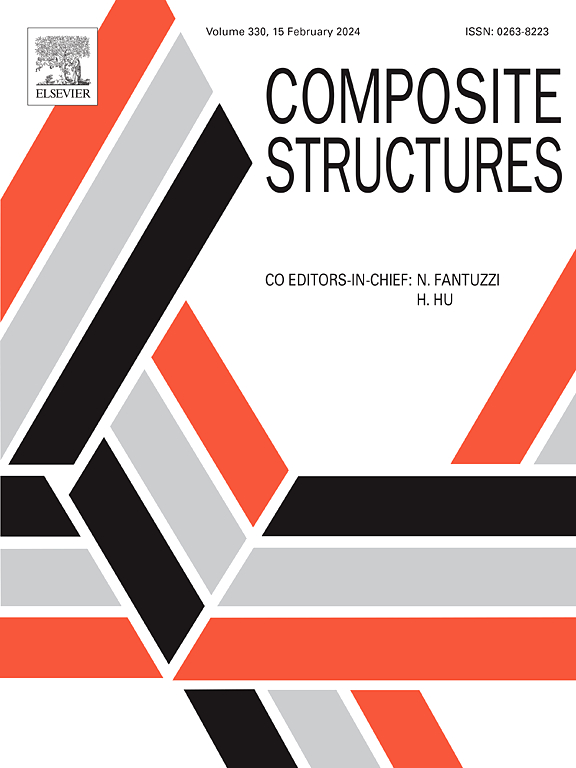A rotating triangular auxetic perforated plate: Structural design and characteristic analysis
IF 6.3
2区 材料科学
Q1 MATERIALS SCIENCE, COMPOSITES
引用次数: 0
Abstract
Auxetic metamaterials have garnered extensive attention over the past few decades due to their exceptional and superior mechanical properties. However, owing to their unique porous structure, it is challenging to ensure that structures possess strong energy absorption capabilities while exhibiting excellent auxetic characteristics. This study introduces a rotating triangular auxetic metamaterial (RTAM) by perforating traditional rigid rotating triangles. Quasi-static compression tests and numerical simulations are conducted on the new structure to investigate the effects of wall thickness and re-entrant angle of the triangular perforated plate on mechanical properties and Poisson’s ratio. The plateau stress and specific energy absorption (SEA) of RTAM are 4 and 10 times higher than that of traditional trichiral auxetic metamaterials (TCAM), respectively. With an increase in wall thickness, both plateau stress and SEA of the structure are improved significantly. As the re-entrant angle increases, the SEA of the structure initially decreases and then increases. RTAM achieves both lightweight structure and ideal mechanical performance, providing an approach for manufacturing lightweight and high-strength auxetic metamaterials, with significant potential applications in the field of energy absorption.
旋转三角形辅助穿孔板:结构设计和特性分析
在过去的几十年里,助磁超材料因其卓越的机械性能而受到广泛关注。然而,由于其独特的多孔结构,要确保其结构在表现出优异的辅助特性的同时还具有强大的能量吸收能力是一项挑战。本研究通过在传统的刚性旋转三角形上穿孔,引入了旋转三角形辅助超材料(RTAM)。通过对新结构进行准静态压缩试验和数值模拟,研究了穿孔三角形板的壁厚和重入角对力学性能和泊松比的影响。RTAM 的高原应力和比能量吸收(SEA)分别是传统三螺旋辅助超材料(TCAM)的 4 倍和 10 倍。随着壁厚的增加,结构的高原应力和比能量吸收都有显著改善。随着再入角的增大,结构的 SEA 先减小后增大。RTAM 实现了轻质结构和理想的机械性能,为制造轻质高强度的辅助超材料提供了一种方法,在能量吸收领域具有巨大的应用潜力。
本文章由计算机程序翻译,如有差异,请以英文原文为准。
求助全文
约1分钟内获得全文
求助全文
来源期刊

Composite Structures
工程技术-材料科学:复合
CiteScore
12.00
自引率
12.70%
发文量
1246
审稿时长
78 days
期刊介绍:
The past few decades have seen outstanding advances in the use of composite materials in structural applications. There can be little doubt that, within engineering circles, composites have revolutionised traditional design concepts and made possible an unparalleled range of new and exciting possibilities as viable materials for construction. Composite Structures, an International Journal, disseminates knowledge between users, manufacturers, designers and researchers involved in structures or structural components manufactured using composite materials.
The journal publishes papers which contribute to knowledge in the use of composite materials in engineering structures. Papers deal with design, research and development studies, experimental investigations, theoretical analysis and fabrication techniques relevant to the application of composites in load-bearing components for assemblies, ranging from individual components such as plates and shells to complete composite structures.
 求助内容:
求助内容: 应助结果提醒方式:
应助结果提醒方式:


